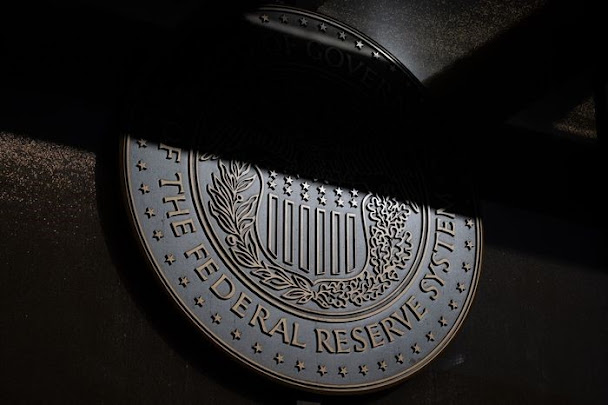Big Banks Stay Cautious as Stress Doesn’t End With a Test
Largest banks fared relatively well in Federal Reserve’s stress scenarios, but are still being conservative with buybacks
By Telis Demos
 The Federal Reserve is poised to raise capital requirements by an average of about 20% at larger banks. PHOTO: GRAEME SLOAN/BLOOMBERG NEWS / Banks endured the stress tests pretty well. But they seem to be anticipating some bigger headaches to come.
The Federal Reserve is poised to raise capital requirements by an average of about 20% at larger banks. PHOTO: GRAEME SLOAN/BLOOMBERG NEWS / Banks endured the stress tests pretty well. But they seem to be anticipating some bigger headaches to come.The results of the Federal Reserve’s annual health checkup of the country’s biggest banks, announced earlier this week, were a bit anticlimactic, especially coming against the backdrop of a recent banking crisis: Nobody failed.
But passing and failing are sort of beside the point.
The results of the test were just prelude to the announcements, made late Friday, by banks of their expected new minimum capital requirements—and, in turn, how much they plan to pay out to shareholders in the form of dividends and buybacks.
All but one of the six biggest banks saw their required stress capital buffers drop from last year’s test.
Yet there wasn’t a wave of expanded buybacks among the banks that announced their plans.
That is often what banks aim to do with excess capital, and one might especially expect this with banks’ shares trading at depressed levels.
Some touted their flexibility to consider future buybacks or complete existing plans.
All five of the big six that made announcements on Friday did raise their dividend, even Citigroup, whose stress-capital buffer requirement rose over last year.
But only Morgan Stanley made any kind of definitive share-repurchase move, to reauthorize a multiyear $20 billion program.
Outside of the big six, trust banks Bank of New York Mell and State Street raised their dividends.
But none of the other large banks that announced post-stress test plans on Friday—Capital One Financial, Charles Schwab, Citizens Financial Group CFG, Truist Financial or U.S. Bancorp—raised their dividends or announced new buybacks.
The fact is that Washington likely has more stresses in store for banks when it comes to capital requirements.
The Wall Street Journal has reported that the Fed is poised to increase capital requirements by an average of roughly 20% at larger banks.
That alone is a good reason to preserve capital, as banks wait out the process to see how exactly their requirements will change, or how else they can mitigate the increase.
“Buybacks generally stayed in the backseat,” wrote analysts at Autonomous Research on Friday.
They also characterized the overall dividend increases as “modest.”
The analysts cited “pending new capital rules” and “ongoing uncertainty around rates” among the considerations for banks.
Higher-for-longer interest rates are a much more present issue than the shocks envisioned by the stress test, like a 10% unemployment rate.
In fact, contrary to what investors have been worried about in the wake of the collapses of Silicon Valley Bank and First Republic, which were hit by fixed-rate assets whose value plunged as rates rose, this year’s stress test assumed a sharp drop in rates.
That generated capital for the biggest banks in the test, because they must include paper losses and gains on parts of their securities portfolios in their capital levels.
“The smaller decline in this year’s aggregate post-stress capital ratio is mostly due to the path of interest rates in the scenario,” the Fed wrote in the stress-test results.
If rates stay high, banks will need to be mindful of how that affects their capital levels—particularly any regional banks that don’t currently include unrealized losses in capital levels, but might in the future.
Shareholders may wish banks were buying up more of their own stock.
But the silver lining of being conservative on buybacks is that it may avoid expensive or panic-inducing capital raises in the future.
And if banks are being cautious with their payouts, they may be able to deploy more capital with clients.
That could help tamp down market volatility, especially for bonds, and help banks boost Wall Street revenue at a time when lending revenue is being squeezed by higher deposit costs.
That is a much more immediate thing to be stressed about.

0 comments:
Publicar un comentario